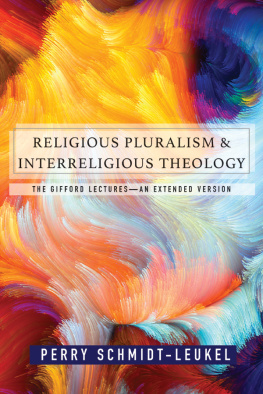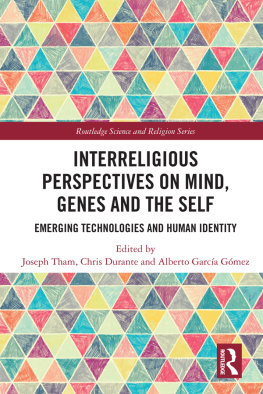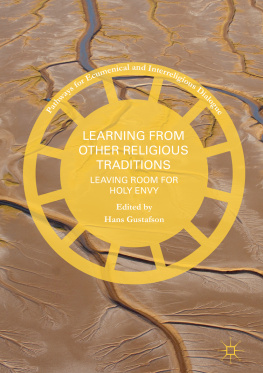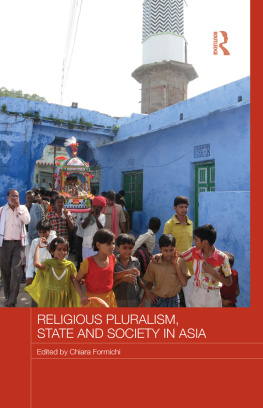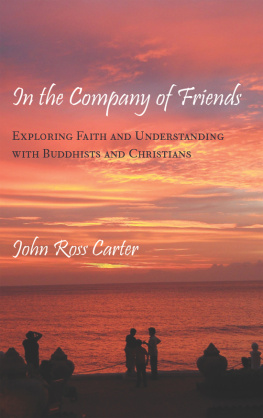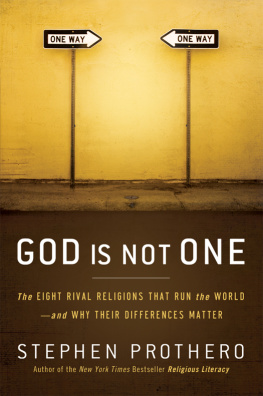Founded in 1970, Orbis Books endeavors to publish works that enlighten the mind, nourish the spirit, and challenge the conscience. The publishing arm of the Maryknoll Fathers and Brothers, Orbis seeks to explore the global dimensions of the Christian faith and mission, to invite dialogue with diverse cultures and religious traditions, and to serve the cause of reconciliation and peace. The books published reflect the views of their authors and do not represent the official position of the Maryknoll Society. To learn more about Maryknoll and Orbis Books, please visit our website at www.maryknollsociety.org.
Copyright 2017 by Perry Schmidt-Leukel
Published by Orbis Books, Box 302, Maryknoll, NY 10545-0302.
Manufactured in the United States of America
All rights reserved. No part of this publication may be reproduced or transmitted in any form or by any means, electronic or mechanical, including photocopying, recording, or any information storage or retrieval system, without prior permission in writing from the publisher.
Queries regarding rights and permissions should be addressed to: Orbis Books, P.O. Box 302, Maryknoll, NY 10545-0302.
Library of Congress Cataloging-in-Publication Data
Names: Schmidt-Leukel, Perry, author.
Title: Religious pluralism and interreligious dialogue : the Gifford lecturesan extended edition / Perry Schmidt-Leukel.
Description: Maryknoll : Orbis Books, 2017. | Includes bibliographical references and index.
Identifiers: LCCN 2016031476 (print) | LCCN 2016045240 (ebook) | ISBN 9781626982307 (pbk.) | ISBN 9781608336951 (ebook)
Subjects: LCSH: Religious pluralism. | ReligionsRelations. DialogueReligious aspects.
Classification: LCC BL85 .S359 2017 (print) | LCC BL85 (ebook) | DDC 201/.5dc23
LC record available at https://lccn.loc.gov/2016031476
To my former students and colleagues at Glasgow University
and all friends in this warm-hearted city.
There are as many paths toward God as there are breaths of the human beings.
Traditional Hadith
How many ways are there to God?As many as there are people.
Joseph Ratzinger
Salt of the Earth
Acknowledgments
This book is based on two series of lectures: contains a revised version of the Gifford Lectures, which I was honored to deliver in October 2015 at the University of Glasgow. It was a marvelous experience to be back to Glasgow Uni with its more than five hundred years of impressive intellectual history. I am extremely grateful to the distinguished members of the Gifford Committee for granting me this excellent opportunity of presenting and discussing my thoughts on interreligious theology in such a prestigious lecture series.
Most of the material in is in part a revised version of an earlier essay published in Ching Feng: A Journal on Christianity and Chinese Religion and Culture 10, no. 12 (201011). I thank the publishers for the permission to reuse parts of these publications in the present book.
The research behind this book was mostly enabled by the support of the Cluster of Excellence Religion and Politics of the University of Muenster, which provided me with three terms of research leave. In these days, when the modern concept of many universities is to view their professors more as research managers than as researchers, such leaves have become invaluable for those among us who still cling to a more old-fashioned profile of the professorial vocation.
My gratitude also goes to my wife, Doris, who dedicated much of her time to the proofreading of the manuscript, and to Teresa Jesionowski, who as a professional copy editor also helped in amending my Teutonic English. I am grateful to Maria Angelini for skillfully steering the production process.
I thank Robert Ellsberg of Orbis Books for his keen interest in the publication of these lectures. Orbis is one of the international publishing houses that has been firmly committed to the fostering of interreligious exchange and reflection for many decades. In 1987, Orbis published the papers of the so-called Rubicon-Conference in The Myth of Christian Uniqueness: Toward a Pluralistic Theology of Religions, edited by John Hick and Paul F. Knitter, which marked a decisive stage in the development of religious pluralism. Finally my gratitude goes to Paul Knitter who, by then, together with John Hick edited the Rubicon papers and now, thirty years later, has provided a helping hand in arranging the publication of this book with Orbis. It is an immense joy to see my new book appearing with the same publisher who produced so many of the books that are treated in this onea fact that is almost reminiscent of the fractal structures which, as I will suggest in the subsequent pages, can be discerned in religious diversity and which require wise and constructive attitudes in our dealings with them.
1
A Preliminary Orientation
RELIGIOUS PLURALISM
It is uncontroversial that our planet hosts a wide range of religious traditions, and people have never ever been more aware of the actual extent of this diversity than today. What is controversial is how one should interpret religious diversity and deal with it. This has become a challenge to the religions themselves. Within each of the major religions we find a range of different approaches to religious diversity, both in terms of how to understand it doctrinally and how to relate to it practically. The first half of this book deals with one set or type of approaches, the one that I call pluralist. When I use the terms pluralist or religious pluralism, I am not referring to the fact of religious plurality or religious diversity but rather to a particular interpretation of religious diversity. Religious pluralism designates a specific theory and evaluation of religious diversity. This theory first assumes that religious truth existsand in a sense must existin a diversity of forms, which are then assessed as equally valid despite their being different. Religious pluralism, as used in this book, is not simply an interpretation of religious diversity, but it is itself a religious interpretation. This interpretation, as I argue, can be developed only from within the different religious traditions. In the of this book, I focus on the developments of pluralist approaches in Christianity, Judaism, Islam, Hinduism, Buddhism, and the Chinese religions. But before I go into the particularities of pluralist approaches within these religious traditions, I would like to begin by making some remarks about the rationale and general features of religious pluralism.
Humans have apparently been religious right from their early evolutionary beginnings and there is obviously more than just one religion in the world. Both of these facts call for some explanation. To the atheist or naturalist the phenomenon of religion is largely a product of delusion and deceit. It is, for example, interpreted as a relic from the early childhood of humanity, when humanity had not yet risen to a rational understanding and exploration of reality (Auguste Comte). Or it is seen as a phenomenon of human self-estrangement, as a projection of human ideals and fears on some imagined supernatural being (Ludwig Feuerbach); or as a projection of psychological (Sigmund Freud), social (mile Durkheim), and economical (Karl Marx) structures reflecting human ideals and values, or feelings of lostness and guilt, or various power mechanisms in society and human reactions to them. In more recent days, religion has also been explained as the result of an in-built neurological structure supposed to serve some evolutionary purpose (Dean Hamer, Lionel Tiger, Michael McGuire, et al.). What all these different theories have in common is that they provide nonreligious interpretations and explanations of religion. That is, they assume that religious understandings of reality are basically wrong. On this premise they try to explain why religion, although being wrong, is nevertheless such a widespread phenomenon. They tend to see the diversity of religions as a further confirmation of their atheistic or naturalistic premise. On the assumption that religion, if it were true, should be far more homogeneous than it actually is, the fact of religious diversity seems to support their view that religion is basically false.

